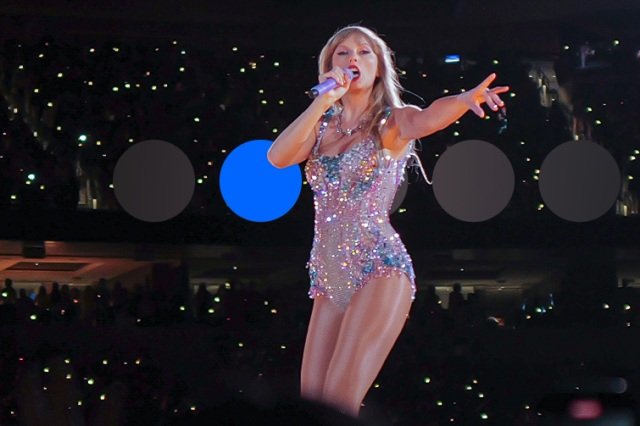Reports from Ericsson’s ConsumerLab and Opensignal have revealed how 5G mobile networks performed during Taylor Swift’s Eras concerts.

The year 2024 marked a significant milestone in 5G infrastructure, with leading telecom operators enhancing networks to support surging mobile demands at high-profile events like the Paris global sporting event, the European Football Championship, and Taylor Swift’s Eras concerts.
These events served as a real-world test for 5G’s capabilities in providing high-quality, reliable connectivity.
Ericsson’s ConsumerLab found that two-thirds of 5G users at these events felt their connectivity expectations were met or exceeded. Satisfaction levels for 5G were 20 percent higher than 4G, with users highlighting consistency and app performance as more important than speed alone.
Many attendees have expressed willingness to pay extra for guaranteed connectivity, with survey respondents ready to add up to 15 percent to ticket costs for seamless app experiences during high-traffic moments. Operators see this as a key revenue opportunity.
Taylor Swift’s concerts alone generated 5.4 TB of data per night — comparable to sharing 1.7 million images or listening to her entire catalog over 4,500 times. During Paris’s opening ceremony, uplink traffic tripled, highlighting the limits of 4G in handling such demand, while 5G allowed smoother user experiences.
Vodafone, Orange, and other operators tailored network planning to meet the unprecedented connectivity needs. Temporary 5G sites and additional antennas were installed at major venues, ensuring network reliability even at extreme data volumes.
To manage the immense data load, operators used mid-band TDD spectrum and Massive MIMO technology, achieving six-fold throughput improvements over 4G. This also enhanced energy efficiency by 3.5 times, underscoring 5G’s role in sustainable network expansion.
Opensignal report indicated that during the days when Taylor Swift performed at the Singapore National Stadium, Singtel users at or near the stadium spent the most time connected to 3G (4.3 percent), followed by those on M1.
StarHub users spend less than half as much time as their counterparts on the other two networks that still use 3G. Time on 3G during Eras Tour days for M1 and Singtel users was higher than that seen across the 90 days before the start of the Singaporean leg of The Eras Tour, while the reverse was true for StarHub.
Australian users spent 26 percent of their time connected to 5G during the days when The Eras Tour concerts took place at Accor Stadium and Melbourne Cricket Ground. However, they spent slightly more time without a cellular signal than their counterparts at the Tokyo Dome and Singapore National Stadium.
Ericsson ConsumerLab found that 5G provided a superior user experience compared to 4G, with users reporting 20 percent higher satisfaction, particularly due to consistent app performance, and willingness to pay a premium for guaranteed connectivity during such high-traffic events.
Ericsson is one of the leading 5G telecom network makers. Ericsson is relying on telecom operators, who aim to shift to 5G network by allocating more Capex.
During the recent Paris Olympics 2024, daily uplink data traffic in central Paris increased by 20 percent, with uplink traffic tripling during the opening ceremony. Relying solely on 4G network to support this upload traffic would have resulted in overloaded networks and significant connectivity failures.
“We take such major events into account in our network planning and in many cases activate additional LTE and 5G antennas on site. This ensures that we can process the huge amounts of data, even when thousands of users are on the network at the same time,” Tanja Richter, Managing Director Technology & Network Director at Vodafone Germany, said.
Orange has deployed temporary mobile sites powered by 5G, which handled 25 percent of the traffic to accommodate the anticipated 11 million attendees arriving in Paris Olympics.
“Key hot spots were also critical, with just six venues managing 50 percent of the total load. The opening ceremony saw traffic surge to three times the volume of a typical busy day, with 5G supporting half of that demand,” Anne Flore Roger, Technical Director, Mobile Network at Orange, said.
Baburajan Kizhakedath
